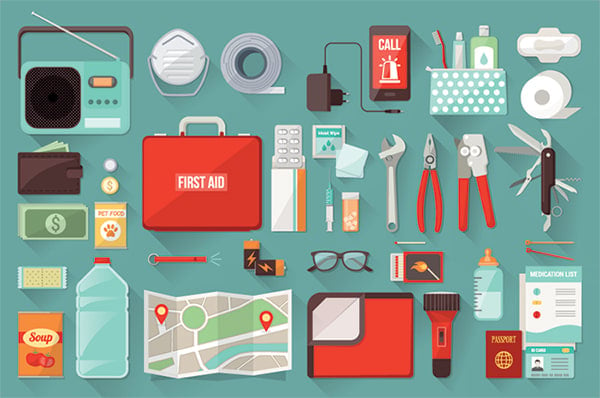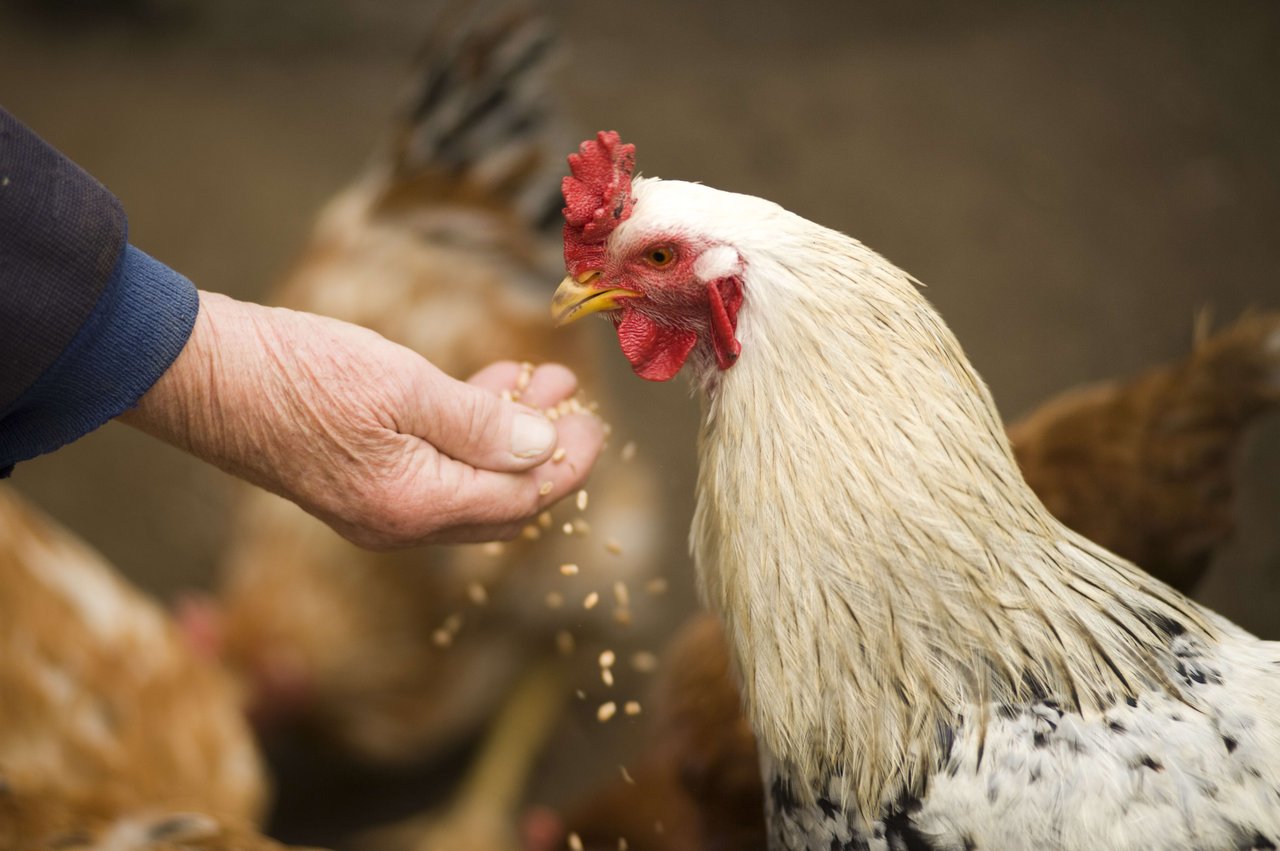Protect Yourself, Protect Your Family, Protect Your Home: How to Prepare for an Emergency


If we've learned anything over these last few years, it's that along with the beauty of living in the Bay Area: access to hiking trails, proximity to one of the world's greatest cities, stunning beaches, and some of the country's best dining, comes the need to be prepared for the occasional natural disaster. According to NASA's Earth Observatory, "Eight of the state's largest ten fires have occurred in the last ten years." This winter's heavy rains and storms, known as "atmospheric rivers," have created mudslides, flooding, and downed powerlines. Earthquakes are rare but can leave residents without electricity and drinking water and often leave fires in their wake. What can we do to prepare so we can rest easy knowing that when nature issues us a challenge, we're ready to meet it head-on?
Staying informed during an emergency can save lives. It's easy to sign up for Nixle alerts which, in addition to making you aware of wildfire progress and approaching storms, will keep you up to date daily on downed power lines, power outages, and traffic accidents in your area. Sign up here or text your zip code to 888777. Contra Costa County also offers an emergency warning system. To register, click here. Download the MyShakes app for Apple or Android to receive notifications of imminent earthquakes, giving you valuable time to find a safe place for you and your family. Be sure to enable location services to allow the ground sensors to connect to your device.
Purchase a hand-crank radio to continuously monitor your local FCC-licensed community information and emergency radio station. In Lamorinda, the channel is AM 1670.
Designate an Out-of-State Contact and add that person's cell number into your family's phones. After a natural disaster, text, don't call. Let your designated contact keep everyone informed of each person's location and safety status and leave the phone lines open for emergency services.
Will emergency services be able to find your home quickly? As Gorden Graham of the MOFD says, "in an emergency, seconds count." Have your house number painted on your curb in contrasting colors. Lighted street numbers can be especially helpful. The fire code requires that addresses are visible in all areas. 4" minimum. 5" if you are 72" feet away.
When preparing to evacuate, check ZoneHaven for updated evacuation areas and routes by entering your zip code. For a map of each city’s zones, click here.
Exceptionally high summer temperatures, strong, dry winds, and plenty of vegetation fuel increase the risk that California will have one or more major fires each year. Thinking ahead can mitigate or eliminate the risk of injury and reduce property damage.
Protect your assets by creating a defensible space around your home and other structures through vegetation management, weed abatement, and fuels reduction. In addition to creating a 0-5 foot "no fire" zone around buildings by replacing wood-chip mulch with stone, gravel, or bare mineral soil, choose fire-resistant plants that are low to the ground and have a minimal sap or resin content, such as bush honeysuckles, cotoneaster, and shrub apples. Trim branches away from eaves and rooves and remove highly flammable trees, including eucalyptus, pines, juniper, and cypress, from within 100' of structures. Click here for a more extensive list of plants and trees which are prohibited in your jurisdiction by the local Fire District and Inspector and those which are fire-resistant. As soon as grasses die and turn brown, weed whack or mow before 10:00 a.m. and only when wind speeds fall below 5 MPH. Do not mow dry grass during Fire Weather Watches or Red Flag Warning, as the plant material may ignite.
In conjunction with the Moraga-Orinda Fire District, the City of Orinda runs a "fire fuel reduction program." Funded by the passage of Measure R, the Wood Chipper program offers free year-round removal of fire fuels removed from your property. Click here for more information. Moraga also runs a Wood Chipper program from November or December through June.
One of the most significant risks to homes during wildfires comes from "ember cast," in which embers cast downwind from a large fire land on rooves or get caught in eaves and vents, creating "spot fires." Ember cast can travel as far as a mile. Don't make it easy for these sparks to ignite. According to the National Fire Protection Association, "Class A fire-rated roofing products offer the best protection. Examples include composite shingles, metal, concrete, and clay tiles." Inspect your roof and attic rents and install metal vent screens with 1/8" mesh. To prevent ember penetration, repair or replace shingles and roof tiles that are loose or missing.
For detailed information on how to prepare your home for wildfires, visit firewise.org.
Before an earthquake hits, spend time with your family to designate safe spaces in each room. Stock up on non-perishable food supplies and water and store them in airtight bins away from your home. After an earthquake, water supplies are sometimes cut off or contaminated. Lamorinda Community Emergency Response Team or CERT sells food-safe water barrels and accessories, which must be pre-ordered in April for pick up in May. Delivery is available for seniors and those who are physically unable to make it to the site.
Once the shaking stops, and you've confirmed no one is injured, check your water, gas, and electrical lines for damage. If you find a leak in the gas or water lines, turn them off at the main supply or meter. It's best to locate these before an emergency and stash an adjustable wrench or gas shut-off tool nearby. YouTube is an excellent place to watch videos of how the valves work and how to shut them off.
In drought-stricken California, it's hard to believe we need to worry about floods, but the heavy rainfall can overwhelm storm drains and streams and creeks already full from previous "atmospheric rivers." Prepare your home by ensuring gutters and drains are clear. Before major storms, all cities in Lamorinda will supply designated areas with sandbags and sand, but these can often disappear quickly. Plan ahead and purchase empty sandbags and pumps at local hardware stores before flooding becomes an issue. For sandbag locations in Moraga and Orinda, click here. For sandbag locations in Lafayette, click here. Don't forget to bring gloves and your own shovel. If you miss the boat, bags of soil will do in a pinch.
Should the time come to evacuate, advance planning can save valuable minutes and provide a sense of calm in a hectic situation. Keep an emergency go-bag packed and easily accessible. For information on what to have inside, click here.
Safes advertised as "fire-proof" don't always survive the hottest fires. Consider putting your family documents in a safe-deposit box at your bank, keep them in your go-bag, or create .jpeg or .pdf files of passports, birth certificates, wills, insurance documents, house and car titles, insurance policies, and mortgage papers as well as a photo or video record of each room of the house with a record of all valuable items. Store these electronic copies in the Cloud or on a thumb drive in your go-bag.
Many families in fire-stricken areas are unable to evacuate because they don't have enough gas. Don't be left stranded on the side of the road. Always keep at least a quarter tank of gas in your car and, should you be forced to flee, take only one car to reduce evacuation traffic and keep streets as clear as possible for emergency vehicles.
If you're fleeing due to fire, leave any driveway gates open and close and lock all doors, windows, and vents to prevent drafts. Drive with your headlights on, even if you're evacuating during daylight hours.
For more information on how to ready yourself and your home for emergencies, the Lafayette Emergency Preparedness Commission created a resident's guide to Wildfire Preparedness and Evacuation. Click here for an electronic copy and take the time to read it thoroughly. It might just save your life.
Stay up to date on the latest real estate trends.

Moving through the tunnel doesn’t mean you can’t partake of the vibrant Bay Area food scene. There are plenty of delicious things simmering over here in Lamorinda’s ki… Read more

Lamorinda is a great place to be a dog. With spots for sniffing like the Lafayette Moraga Trail, Rancho Laguna Park and the Lafayette Reservoir, as well as the multitu… Read more

Winter offers plenty of activities around the Bay, whether you’re looking to celebrate the season or procrastinate a little longer on your holiday shopping.

When summer temps top out, and the sun starts to blister in the Bay, it’s time to seek some spots for swimming. Lake, lagoon, pool, or beach, there’s more than one way… Read more

If we've learned anything over these last few years, it's that along with the beauty of living in the Bay Area: access to hiking trails, proximity to one of the world'… Read more

Whether you’re a hardcore marathoner or someone who prefers to limit daily exercise to the distance between the fridge and the couch, having kids changes everything. T… Read more

As most of us know by now, staying healthy requires a synergistic approach. Exercise alone is not enough, nor is eating the right foods. The effects of cortisol, the “… Read more

If the recent winter storms and the threat of wildfire have taught us anything, it’s that we need to be more self-reliant. There are many ways to prepare for power out… Read more

This year’s bird flu has made it hard to find eggs on the shelf and left us gazing longingly at our neighbor’s hens. Before you get all foxy and start stealing from ot… Read more